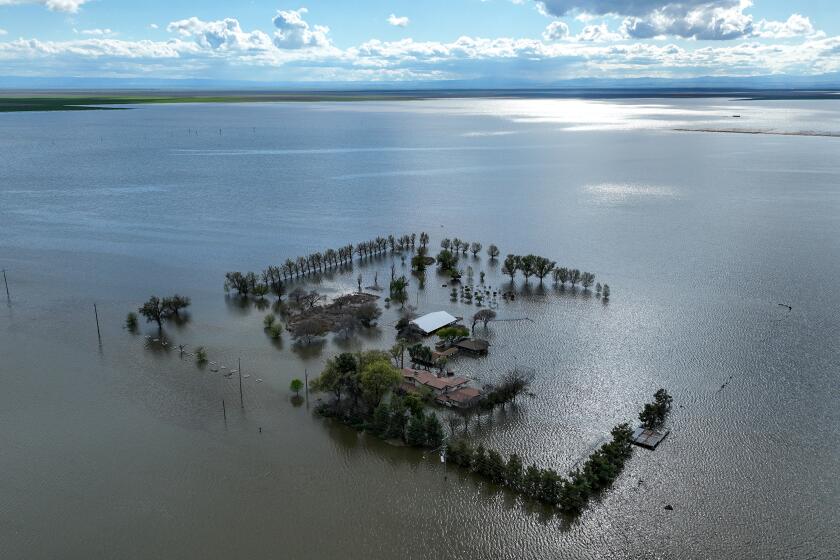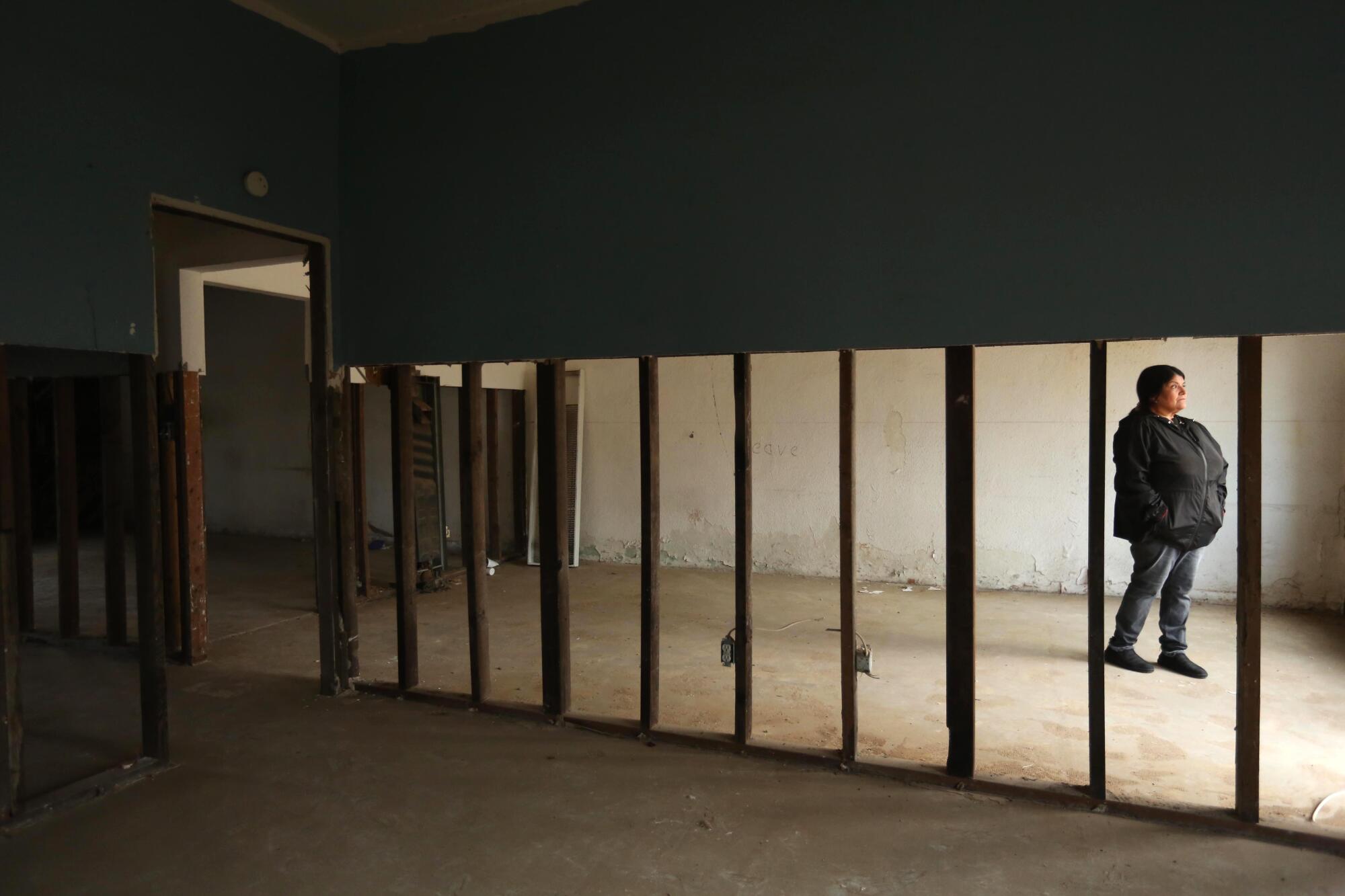
- Share via
PLANADA, Calif. — It’s been nearly a year since Erica Lopez Bedolla and her children fled their home as dangerous floodwaters rose around them, washing through neighborhood houses, drowning family pets and rendering much of her town of 4,000 uninhabitable.
The Lopez family is back home now, albeit living amid a construction zone, showering at a neighbor’s house and having anxiety attacks at the thought of rain. Up and down the streets of their close-knit community, where more than 80% of residents experienced losses in the floods, the story is the same: houses in various states of disrepair and residents trying to go about their lives without basic comforts such as hot water, drywall or insulation.
The flooding that ravaged Planada, a farm town in eastern Merced County, was a stark example in a broader pattern that played out across California during the epic rains of 2023: Atmospheric rivers pounded areas rich and poor with equal ferocity, but poor rural communities, often unincorporated, sustained crippling, widespread damage and bore the lasting brunt. Planada flooded in January after a creek near town burst its banks. Pajaro, a farmworker community of about 3,000 residents in Monterey County, flooded in March after a levee failed. In Tulare County, levee breaks and overwhelmed irrigation channels caused flooding in and around farm towns including Allensworth, Cutler and Alpaugh.

In many of these places, inadequate maintenance or lagging improvements by local districts, counties and the U.S. Army Corps of Engineers made flooding worse. In Planada, for example, it had been more than a decade since brush had been cleared from Miles Creek. In Pajaro, state and federal officials had known the levee protecting the town from the Pajaro River was at risk for failure but had not prioritized improvements because Army Corps models determined the cost-benefit ratio did not pencil out. In Tulare County, Allensworth saw water cascading toward town after someone cut a levee in the dead of night, presumably to divert the floodwaters from cropland.
After the storms blew through, many of these communities struggled to access aid because they are unincorporated and suffer from a long history of disinvestment. Many of their residents are undocumented, making them ineligible for federal assistance.
In California, as elsewhere in the U.S., such communities are at heightened risk for flooding. According to research published in September in the journal Earth’s Future, poor communities are more likely than affluent ones to be located behind levees and their levees are often substandard.
The challenges in California are amplified, said study author Farshid Vahedifard, a professor of civil and environmental engineering at Tufts University, because so many of the state’s thousands of miles of levees were built by farmers, settlers and small irrigation districts and there is little data on their vulnerabilities in a flood.
“It’s not surprising,” said Michael Méndez, a professor of urban planning and public policy at UC Irvine. “The underinvestment of physical infrastructure in these communities has been going on for decades.”
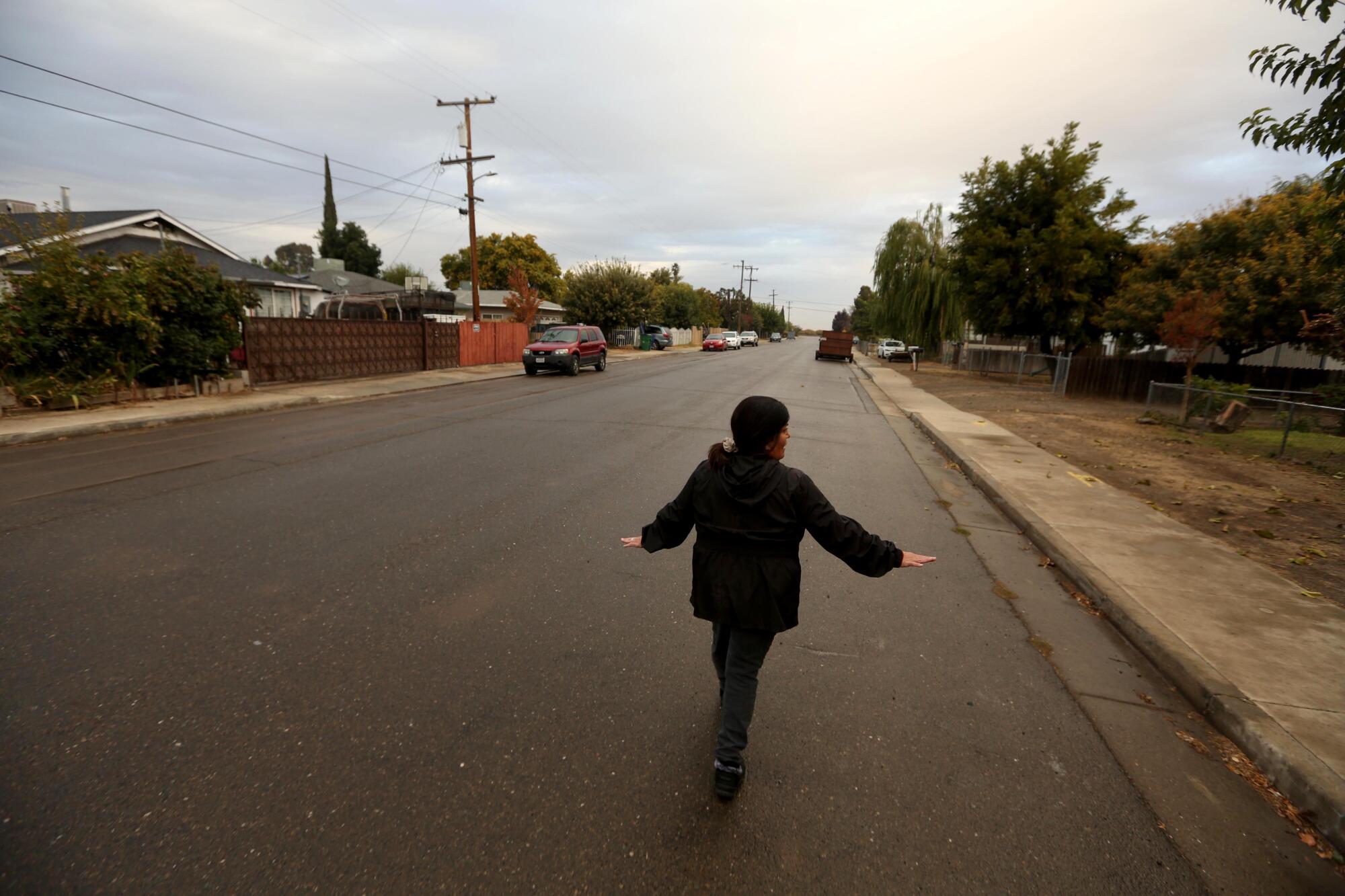
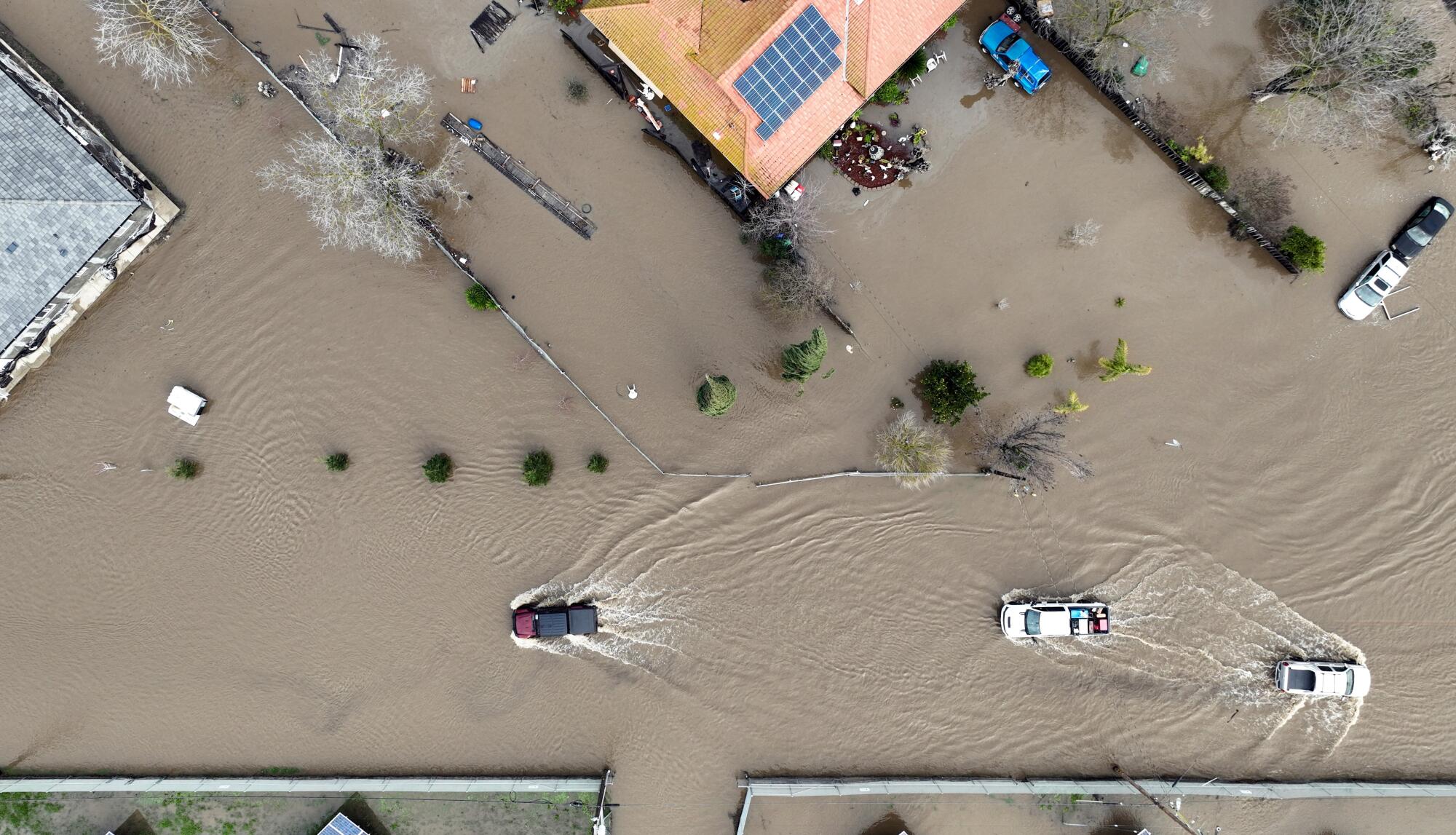
And, experts said, it’s likely to get a lot worse. Many of the state’s levees are deteriorating. Climate change is predicted to lead to more extreme swings in weather — so-called hydroclimate whiplash. As these forces converge, Méndez said, communities like these will be “first and hardest hit. They are physically vulnerable and socially vulnerable.”
State officials say they are aware of the problem. Karla Nemeth, director of the Department of Water Resources, said her agency is “working with communities on the front line of climate change who are often rural, underserved communities” by awarding grants for flood planning and levee maintenance. Agency officials noted they were in the final stages of planning improvements for the Pajaro River levee when the devastating March breaks occurred.
In response to the recent floods, state officials awarded $40 million in direct aid to Planada and Pajaro last summer, an effort to compensate for the fact that so many residents in those towns were ineligible for federal aid because of their immigration status.
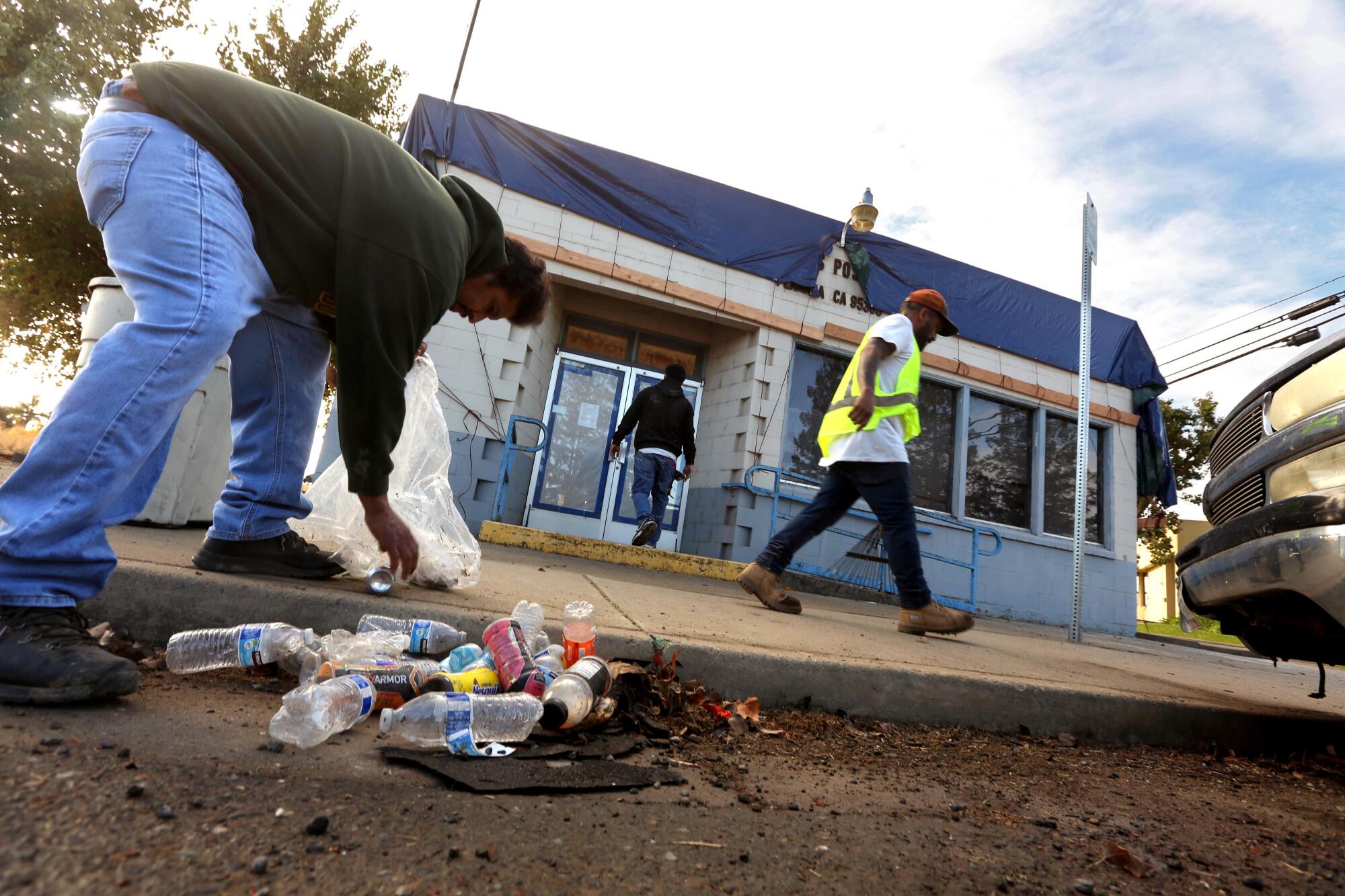
Though grateful for the help, residents note they still don’t have the money. It took the state until October to get the checks to the local level and county officials have been debating how to spend the funds.
Merced County Supervisor Rodrigo Espinosa, who said he has spent much of the year trying to force his county to respond to the January disaster and prepare for the next one, put it bluntly: “Planada is not a priority.”
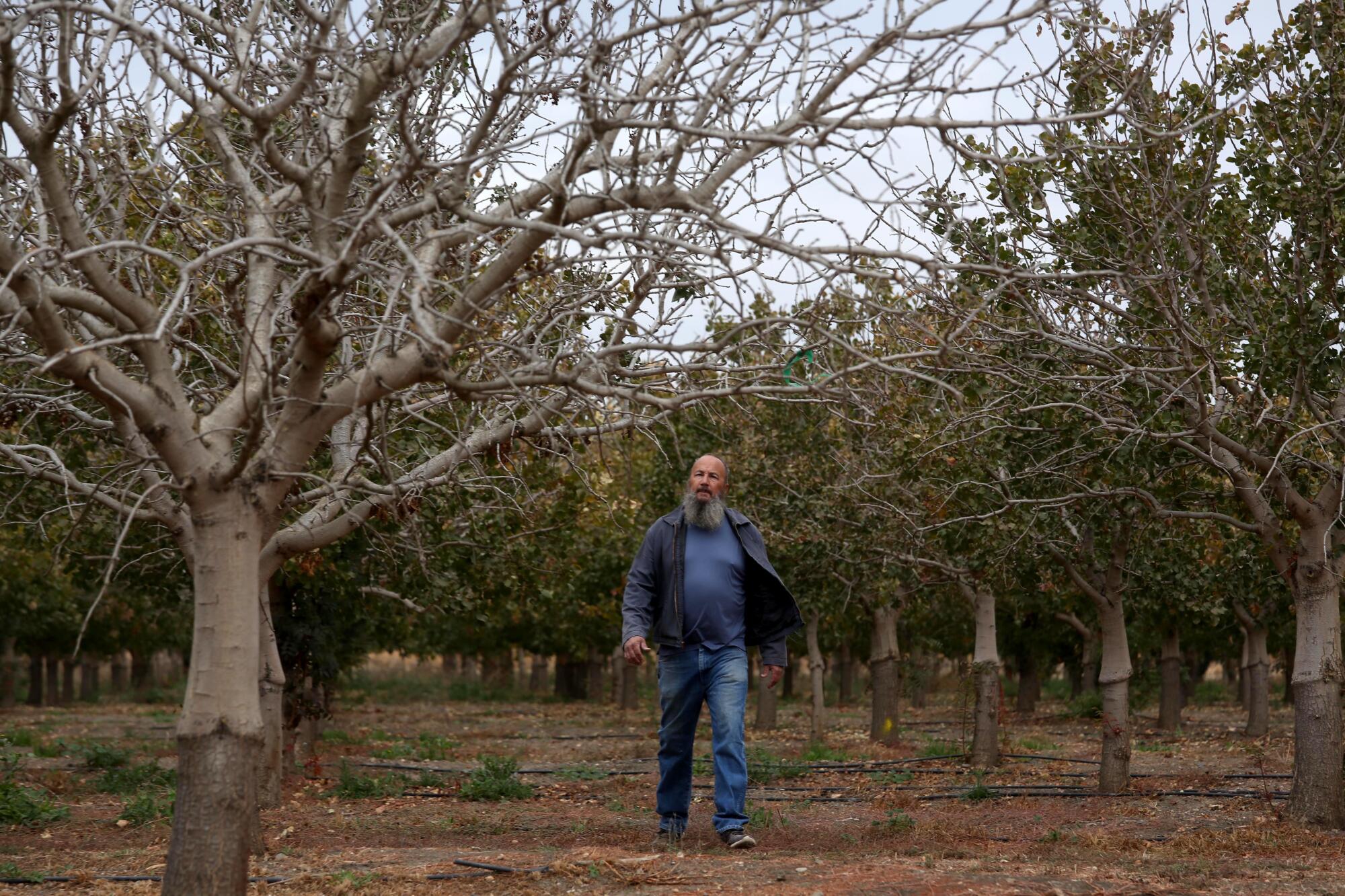
John McCorry’s family has been farming land in eastern Merced County beneath the peaks of the Sierra Nevada since the late 1800s, when William J. McCorry came from Ireland, toiled briefly in Northern California silver mines and then got work as a ranch hand near Merced. In the 1880s, he started buying land just east of what is now the community of Planada and eventually amassed more than 1,000 acres. McCorry and his son farm it now, and recently planted acres of pistachios that march across the former rangeland in sharp rows, like lines of soldiers.
Because of this long family history and a life tied to the seasons and their weather, McCorry grasps something that many people in California do not: For all the time and resources California has invested in manipulating the flow of water across the state, flood control is inherently local.
California’s water — which courses down from the mountains and into rivers that stretch across the Central Valley toward the ocean — is among the most heavily engineered in the nation. Over the last 150 years, the state and federal governments have built a complex network of aqueducts, pipelines and pumping plants that deliver water from the north state to crops and thirsty communities in Central and Southern California. The government has erected giant dams on most of the state’s great rivers, including the Sacramento, the American and the San Joaquin. Thousands of miles of levees crisscross the valley floor, holding water back or redirecting it where farmers need it.
But in the end, it doesn’t matter how big or strong the earthworks of the state and federal government are: If the rain pounds with enough force and a nearby irrigation ditch or culvert fails, the water will come.
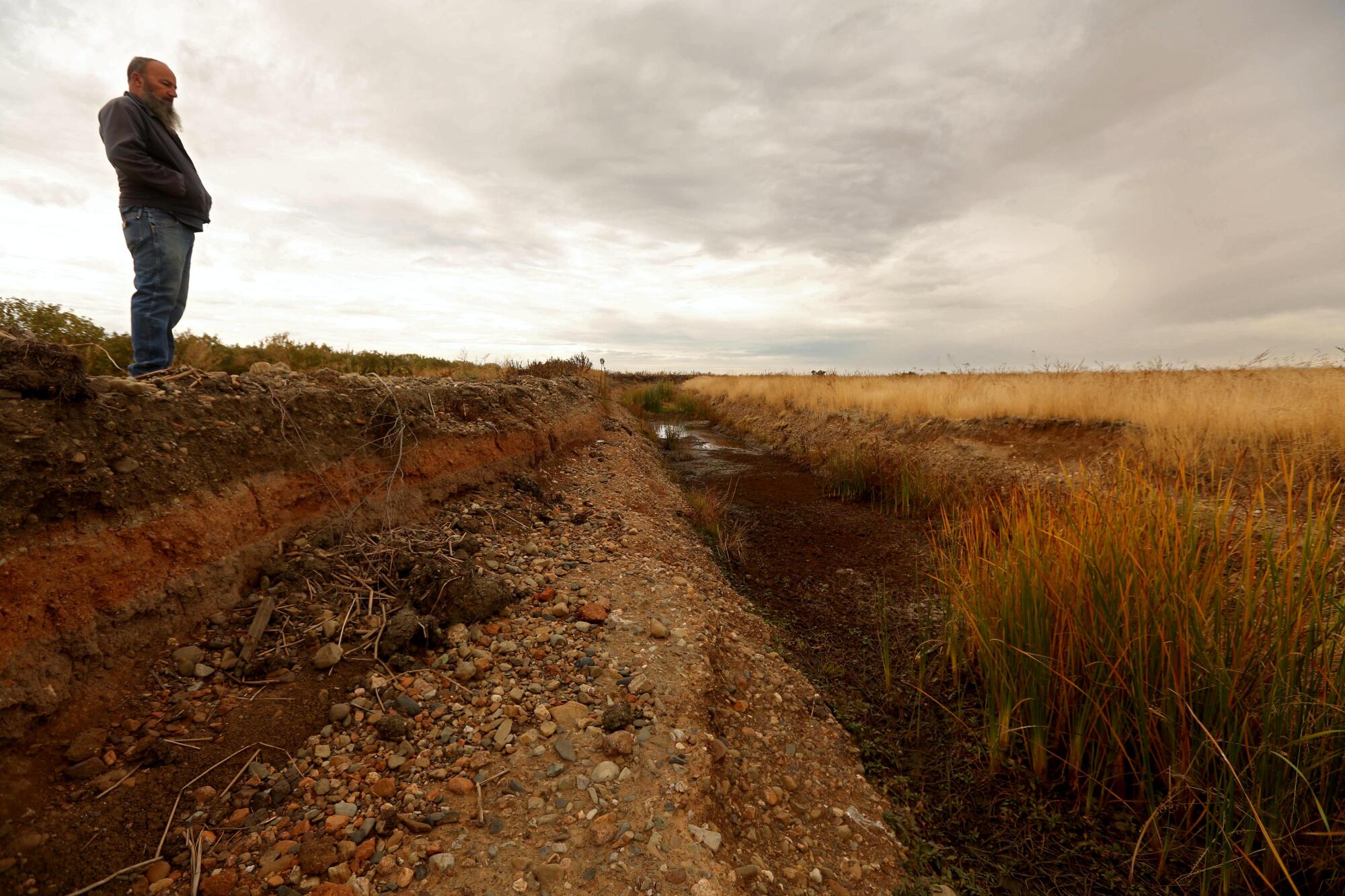
For that reason, McCorry keeps a sharp eye on Miles Creek, which flows out of the Sierra Nevada and across the valley floor, intersecting with a channel maintained by a local irrigation district near the eastern edge of his farm.
The district took care of brush clearance in the creek and for a time typically came out to clear it every few years, McCorry said. But then it stopped — around the time municipal finances got hollowed out by the Great Recession. As the rains pounded through California in late December and early January, McCorry estimated it had been about 15 years since anyone had come to clear out the overgrown brush and stubby trees from the creek bed. And as storm after storm rolled in, McCorry and other residents grew more nervous.
Their pleas to clear the brush fell on deaf ears. It turned out Merced County’s permit with the state for stream clearance had lapsed, and without a permit, the county couldn’t legally clear the creek or hire anyone else to do it, McCorry and others said.
Land barons seized control of the Tulare Lake Basin generations ago. This year’s destructive flooding left troubling questions about the power they wield.
On the night of Jan. 9, the worst happened: The creek backed up amid torrential rains and blew out its banks in several places.
Water exploded across McCorry’s pistachio orchards — just a few weeks after he had made the decision not to buy crop insurance. As the creek continued to surge, another section blew out, a few hundreds yards southeast.
Eventually, all that water poured into Planada, rushing into town in the dark, surrounding people’s homes, rising up in their yards, eventually seeping in under door frames and window sills.
Hundreds of families looked up from their TVs, their dinner preparations, their reading of children’s bedtime stories and perceived that their homes were flooding.
The county alert system failed to notify them, and so, as sheriff’s deputies went door to door trying to reach as many people as they could, people helped one another escape. By morning, according to a study from researchers at UC Merced, more than half the community’s homes were damaged. Many residents were displaced for months.
“Everything is lost,” said Anastacio Rosales, 70, who was in Mexico visiting his wife when the floodwaters surged. He rushed back to find his home destroyed.
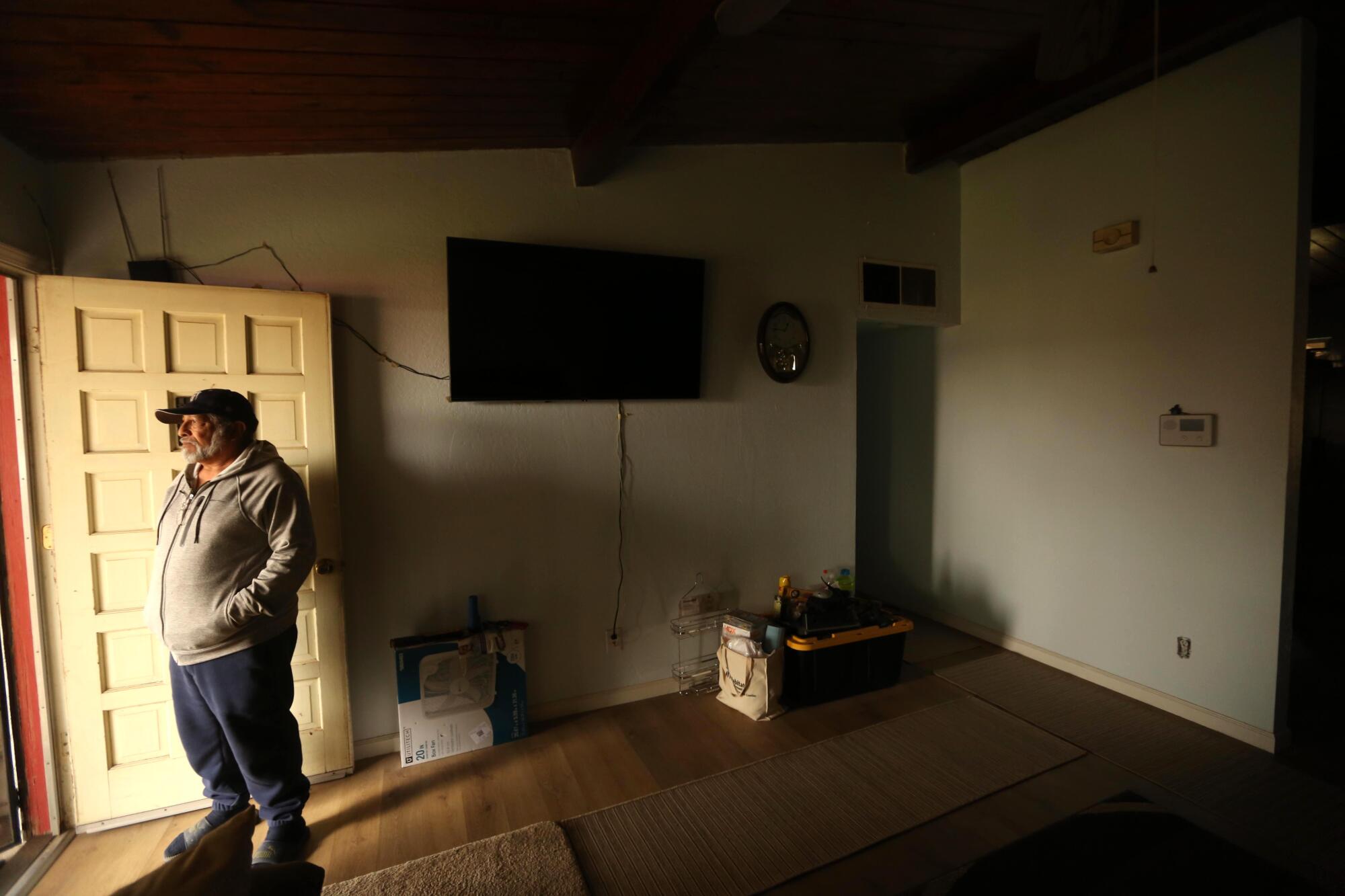
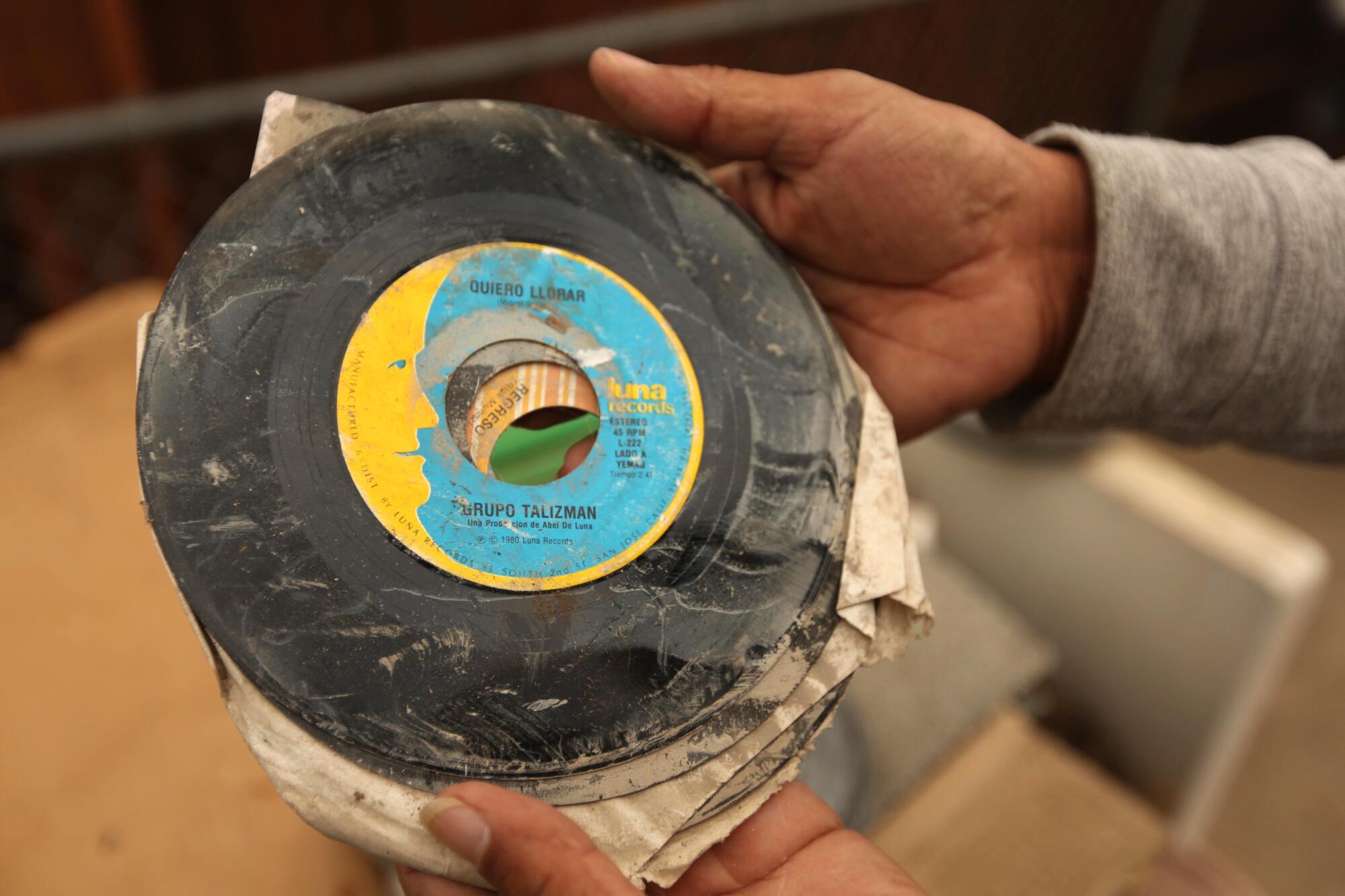
For McCorry, the damage didn’t become fully clear until after the flood, when it became apparent how many of his pistachio trees had suffocated and were now sick or dead. He estimated his crop losses at about $250,000 this year, on top of the cost of replanting and reduced production in years to come, which could top $3 million.
Two months after Planada flooded and 100 miles west, a similar dynamic played out along the Pajaro River, which forms a border between Santa Cruz and Monterey counties. Amid pounding storms, the river burst its levee, inundating Pajaro and trapping scores of residents.
As locals began to assess the damage, an Army Corps official acknowledged that engineers had known for decades that the levee was inadequate, but had chosen not to spend money to protect the town, because it was so impoverished. “It’s a low-income area. It’s largely farmworkers that live in the town of Pajaro,” Stu Townsley, the U.S. Army Corps of Engineers’ deputy district engineer for project management for the San Francisco region, told The Times last spring. “Therefore, you get basically Bay Area construction costs but the value of property isn’t all that high.”
In Tulare County, which sits in the lower reaches of the San Joaquin Valley and extends east to the southern Sierra Nevada, the flooding came from busted levees and bursting creeks as water rushed out of the mountains. Dams filled up, bridges washed out, long-dry stream beds burst with roiling water, and Tulare County Sheriff Mike Boudreaux issued one urgent evacuation order after another.
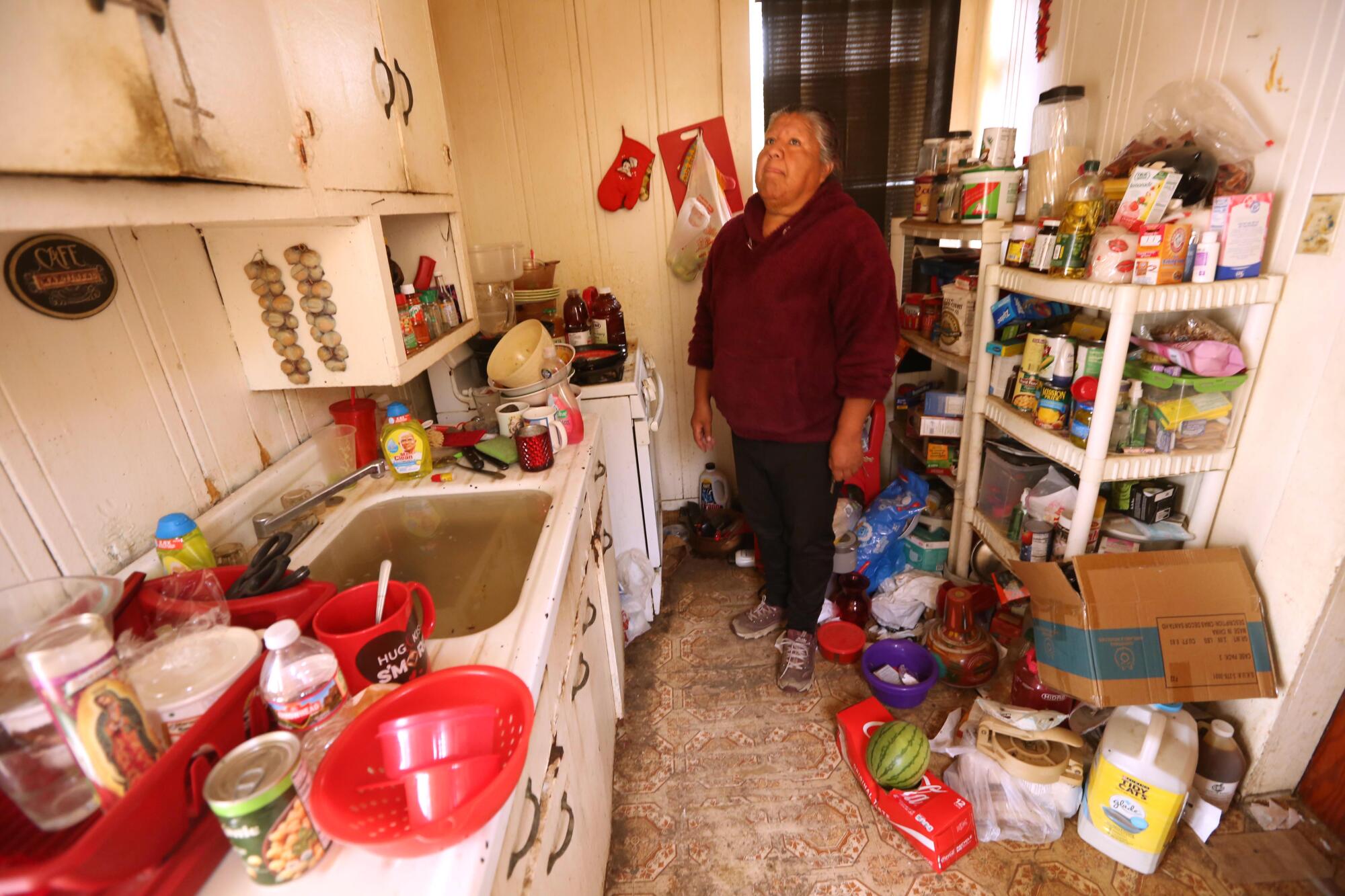
The exodus began in early March, with foothill towns such as Three Rivers and Springvale getting hit hard. But the water quickly reached the valley floor. Exeter, one of the fanciest towns in the county, had some evacuations. But many of the communities that were inundated were home largely to farmworkers: Cutler, Teviston, East Porterville, and further west in the Tulare Lake Basin, Alpaugh and Allensworth.
“We should not have been the first communities to get flooding” before other places around Tulare Lake, said Dezaraye Bagalayos, director of the Allensworth Progressive Assn. “We’re sitting at higher elevations.”
Tulare Lake is vast and inviting, but is it safe? We took a boat tour to find out what lies beneath its shimmering surface.
Bagalayos noted that major landowners in the basin had a long history of engineering the landscape to direct water to their benefit.
“When they don’t want water to flow into their crops, they’re gonna do whatever they do to make sure it goes somewhere else,” she said. “We’re not invited to the table when it’s decided ... where the water is going to flow.”
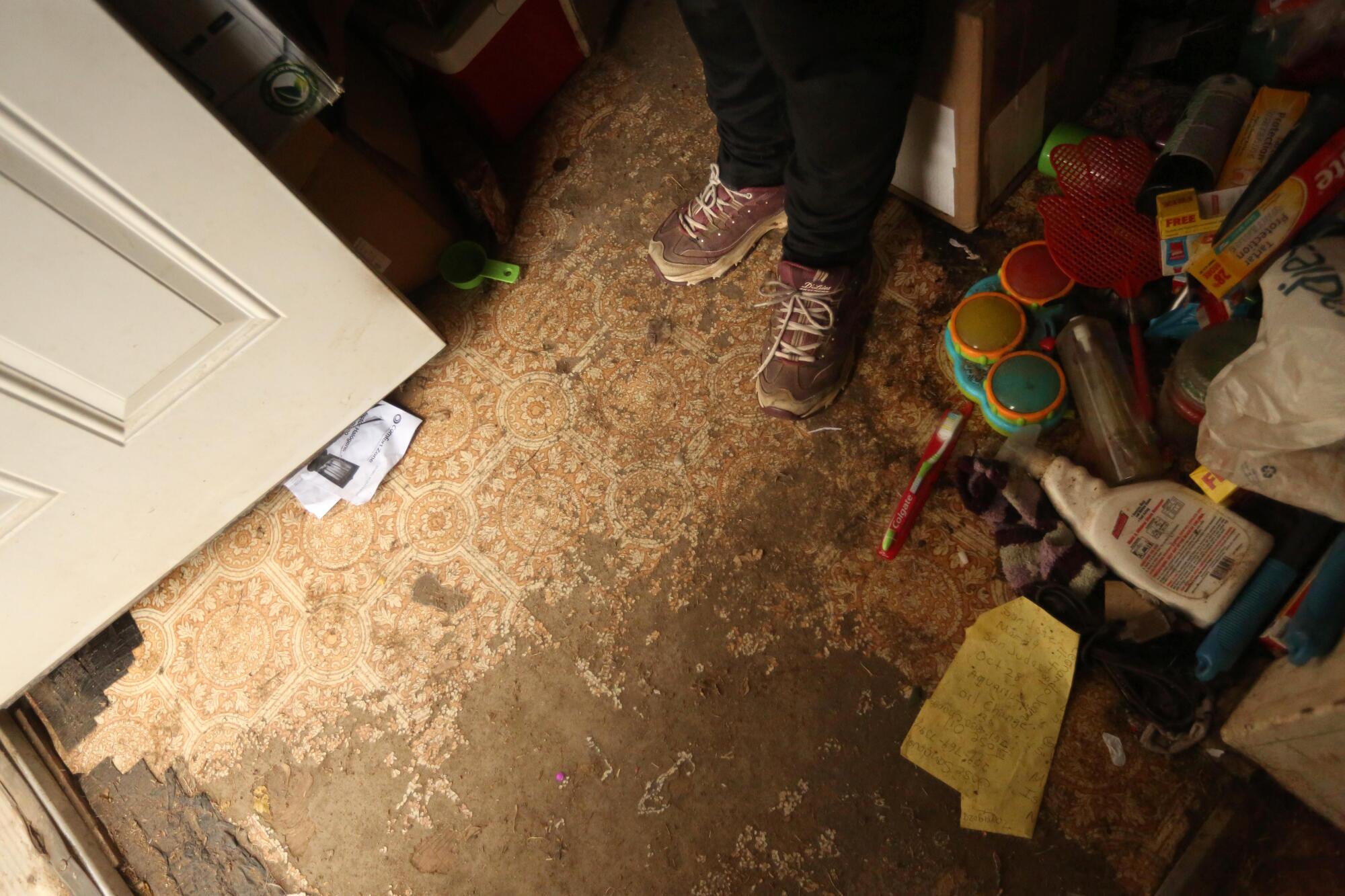
Tulare County officials said that the flooding occurred because there was simply too much water pouring down from the mountains and that the sheriff and other rescue officials performed near-miracles, day after day, in saving as many homes as they could and getting people evacuated.
But Janaki Anagha, director of community advocacy at the group Community Water Center, said the flooding in Tulare County was compounded by the “fractured way” that flood management is handled.
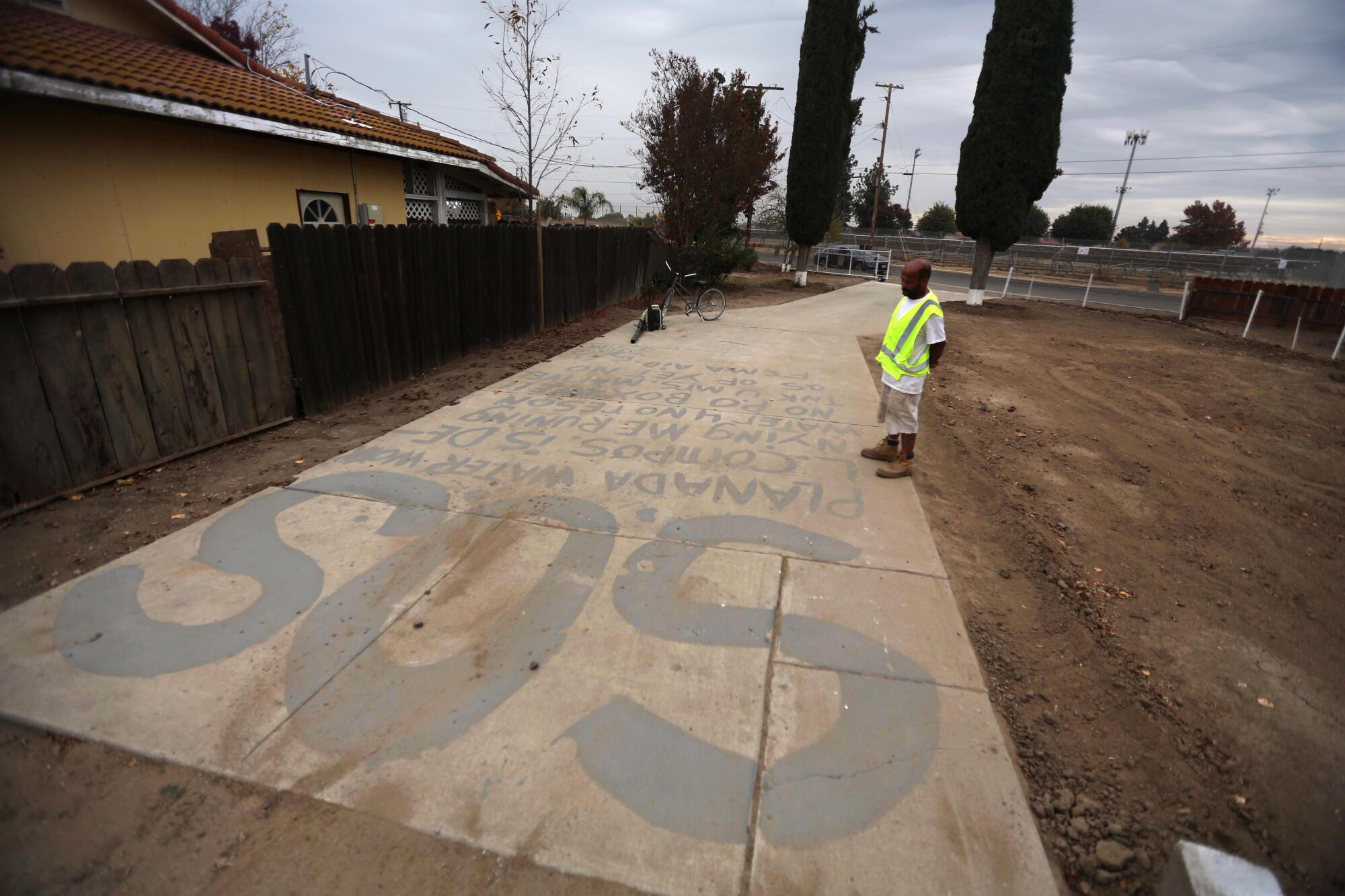
The county, along with nearby Kings and Kern, opted out of the state’s Central Valley Flood Protection Plan. Instead, local irrigation districts, controlled by the region’s big landowners, tend to oversee the flow of water through a network of irrigation canals. Because the focus of these agencies is getting moisture to crops, the impact on unincorporated communities can sometimes be an afterthought, Anagha said.
“This is maybe the part that gets lost on urban folks,” she said. “When we’re talking about flooding in farmworker communities, it is the result of overflow of these existing irrigation channels [that run] adjacent to or through unincorporated communities that are the population centers. But they have no power to affect any decisions around maintenance or where the water flows.”
Shant Karnikian, whose law firm represents hundreds of residents in Planada, Pajaro and Tulare County who were flooded in 2023, said it “seems to be too much of a coincidence to be just a coincidence that it is these poor communities that get hit so hard when the infrastructure fails.” His firm has filed one lawsuit, which names Merced County and the state of California as culpable, and said more are planned.
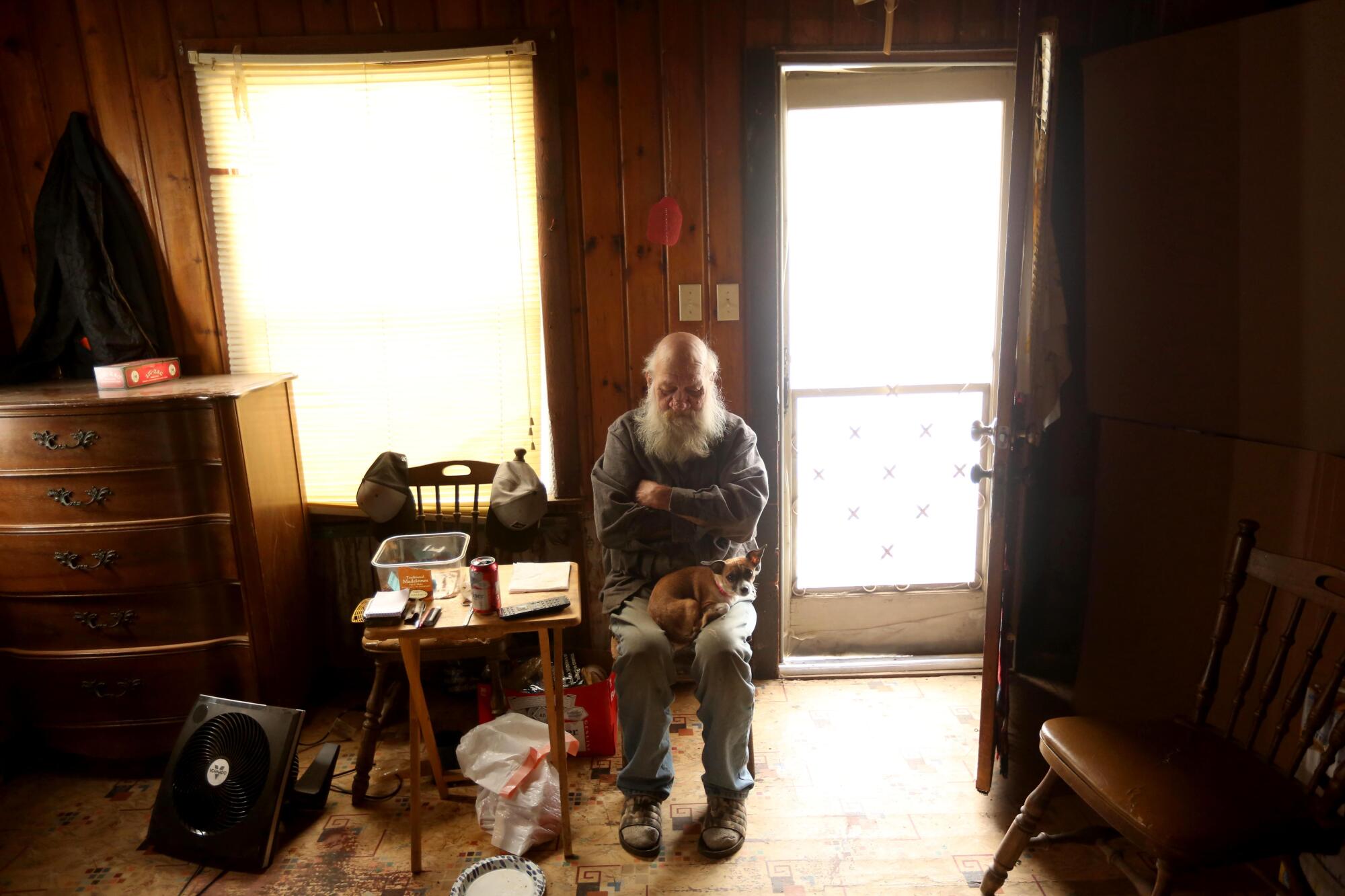
In late October, top state officials, including state Secretary of Natural Resources Wade Crowfoot, summoned the media to a muddy berm near the Sacramento River in Yolo County to warn that California could be facing another wet winter. They urged residents across California to assess their flood risk and be prepared.
In Planada, many residents greeted the news with resignation.
The town, which was touted by a developer a century ago as “the Palm Springs of Central California” and graced with a grand plaza before the development schemes collapsed, still feels like the scene of a disaster.
Walking the streets near the community center, house after house is in some stage of repair. Some residents have yet to begin, because they or their landlords don’t have the money.

Amid so much need, the $20 million in aid the state awarded Merced County to help Planada recover from the flood has been the topic of vigorous local debate.
County officials said they wanted to spend some of the money on improving the town’s infrastructure, including better flood control. Some residents argue that their taxes should already cover that work and that the funds should go toward helping people replace damaged drywall and ruined cars.
Similar complaints have roiled Pajaro, which was also awarded $20 million in state aid. Earlier this month, Monterey County’s Office of Emergency Management proposed spending $6 million on direct relief and funneling other portions of the funding toward improvements such as sidewalks and libraries. Residents pushed for more direct relief. Eventually, supervisors decided that $12 million would go to residents and small businesses to help with flood recovery and the remaining $8 million to infrastructure and community improvements, including a “resilience center.”
In Planada, Lopez is grateful to be back in her home after temporarily relocating to migrant farmworker housing. On a recent afternoon, she showed off the cabinetry her husband is installing in the rebuilt kitchen and new floors that replaced ones curdled by mold. The work is proceeding slowly, she said, reliant for now on credit cards, careful budgeting and the depletion of their retirement savings.
“It takes time,” she said of recovering from a disaster. Many of her neighbors are anxious about the winter ahead and how much rain it might bring. Recently, Lopez offered to take her kids on a trip to the beach. They refused.
“They don’t like water anymore,” she said.
Times staff writers Susanne Rust and Ian James contributed to this report.
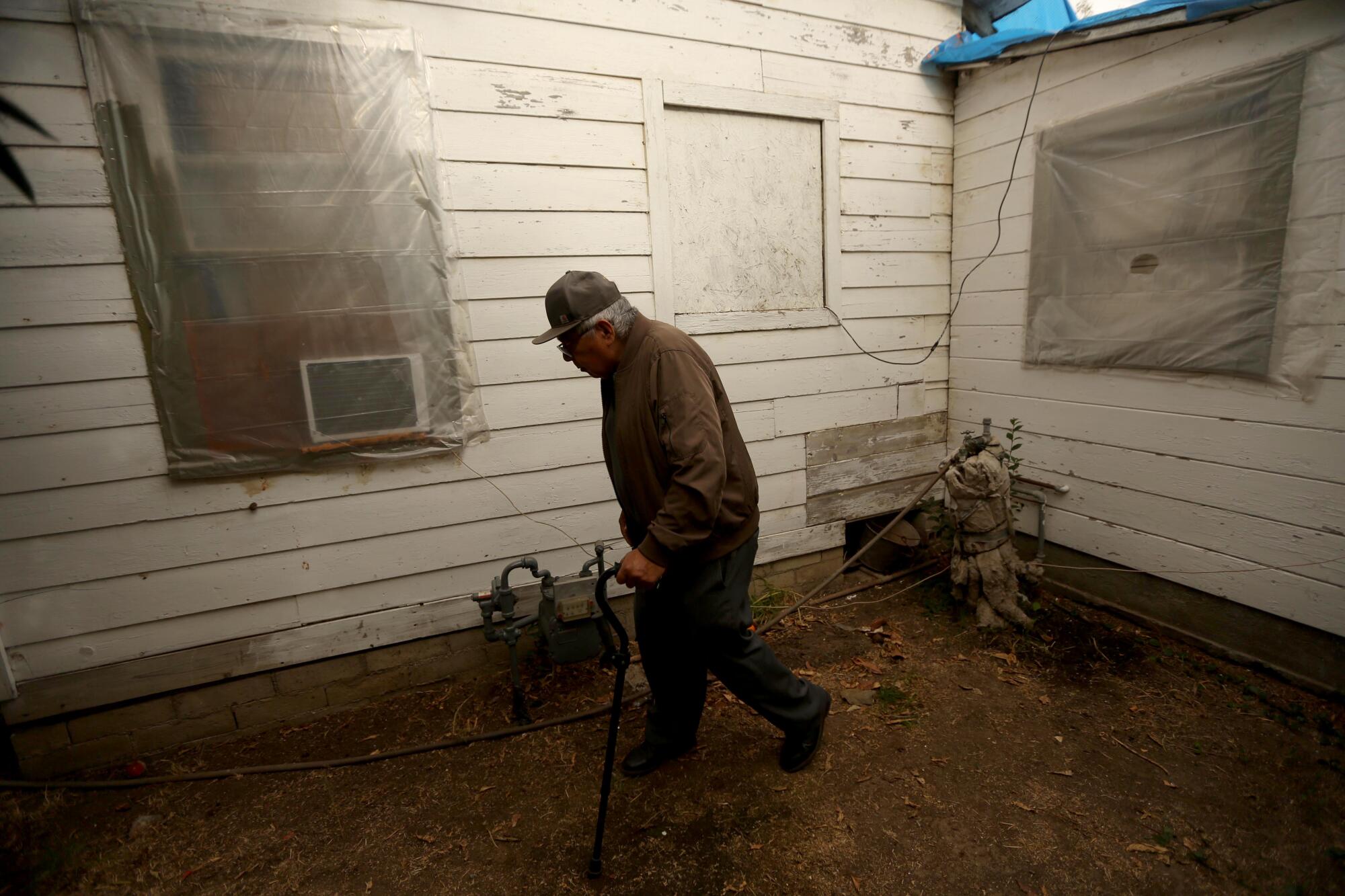
More to Read
Sign up for Essential California
The most important California stories and recommendations in your inbox every morning.
You may occasionally receive promotional content from the Los Angeles Times.
